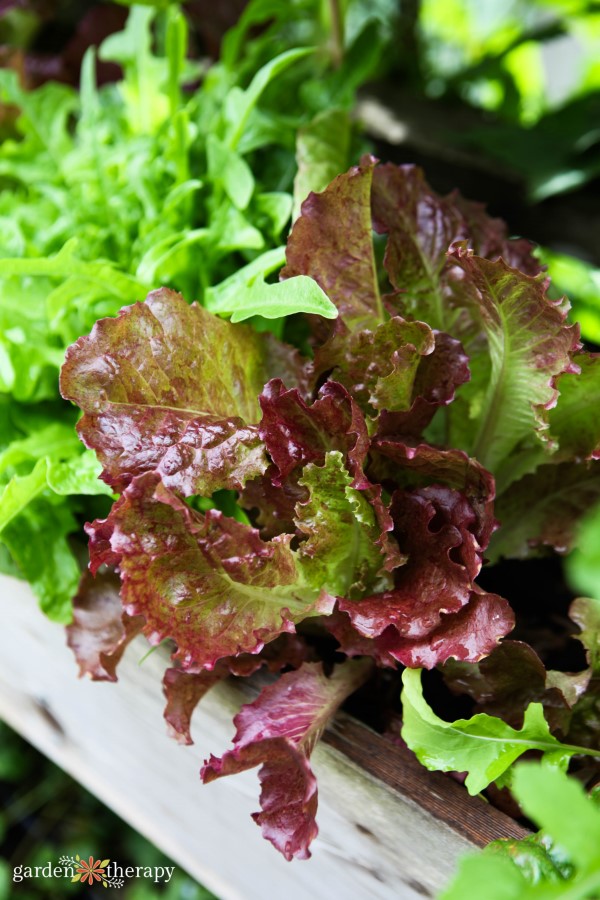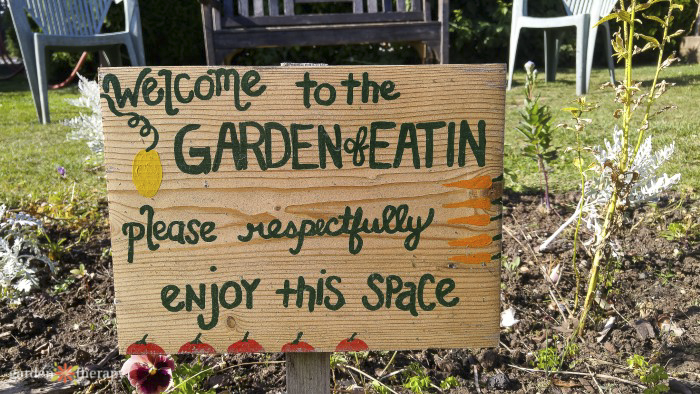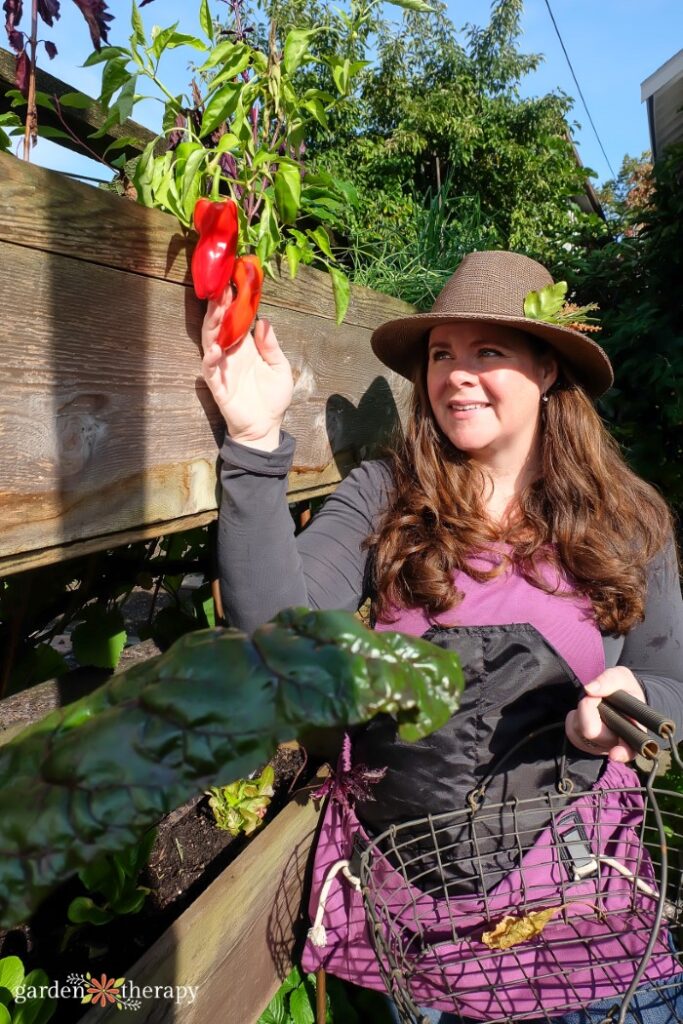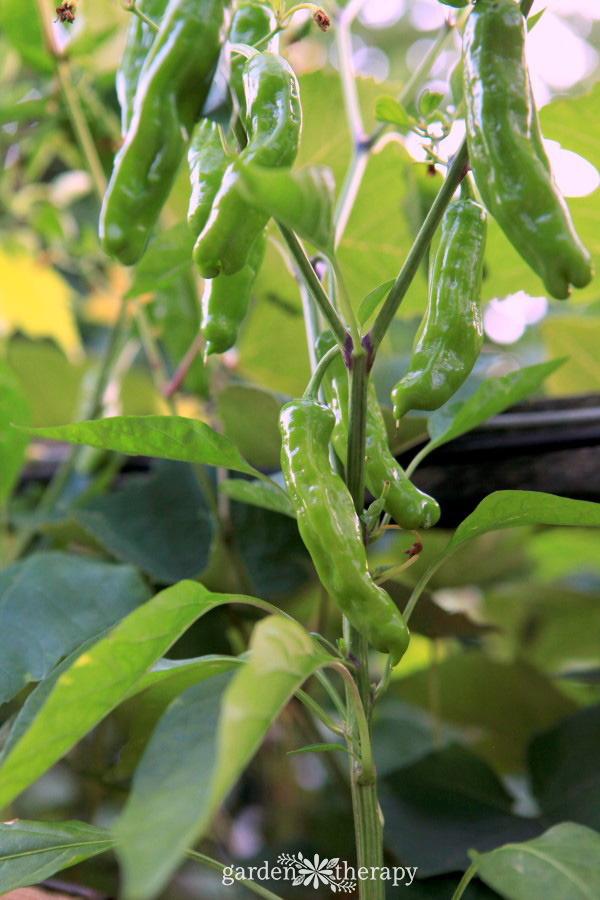Everyone has experienced it. Big eyes and mouth open in shock, looking at the total for your grocery bill. Yes, rising food costs seem to be here to stay, and it’s taking a toll on the average wallet. Starting a victory garden has been a wonderful tool in the past for helping with food security, and it’s time to bring them back!

I have a secret…I haven’t grown food for a couple of years. Yes, really! I’ve had a couple of the busiest years of my life. I spent a whole season writing a book, growing projects and taking photos for it. That year, my garden was all about being the main star of The Regenerative Garden.
The next year, I was moving houses. I had to pack up my home of over ten years, and I knew from experience that I would leave almost all of my plants behind.
Thankfully, I always have my herbs and fruit bushes to rely on. But growing food has never been a huge focus for my garden. I would purchase things like carrots and turnips because it was cheaper than growing the plants for months.
But now, things are completely changing. Everyone has noticed how high their grocery bills have gotten over the past year. Inflation rates have also made good, fresh vegetables harder to find, and people are buying fewer of them.
So I think it’s time for me to start growing food again. And there’s no better way to do so than by growing a victory garden!
Jump ahead to…
- Why is the Price of Produce Going Up?
- What is a Victory Garden?
- Benefits of a Victory Garden
- How to Start a Victory Garden
- Choose a Container
- Choose Your Plants
- Maintaining Your Garden
- Sharing and Preserving Your Bounty
- Frequently Asked Questions About Victory Gardens
- More Posts About Gardening

Why is the Price of Produce Going Up?
The proverb goes that the best time to plant a tree was 20 years ago. The second-best time? Now. The same could be said about planting food and growing a vegetable garden.
Thanks to inflation, the cost of living will always go up. Unfortunately, the minimum wage doesn’t always keep up with these increases. Especially if you live in an expensive city like me!
The Canada Food Price Report estimates that the cost of groceries will continue to rise in 2023 by 5-7%. Vegetables are supposed to rise even higher by 6-8%. They estimate a family of four will spend $1,065 more on food in 2023.
While this is just a Canadian example, I know countries worldwide face similar concerns. Higher grocery bills can have a big impact!

There are so many factors converging to make the price of produce go up. For starters, food producers are dealing with more costs such as labour, packaging, and energy. Then they pass this cost down to the consumer.
Poor weather in growing regions also plays a part. For instance, Arizona is a lead producer of leafy greens, and their drought made the price of lettuce skyrocket.
Other global factors come into play. Continued supply chain disruptions and labour shortages from the pandemic still affect grocery prices today. The recent Russian invasion of Ukraine also affects food prices since both countries are top agricultural producers.

What is a Victory Garden?
So what does one do to lower their grocery bills? Well, starting a victory garden is a good place to start. Victory gardens originated in Canada during WWI, though they became popularized during WWII. At the time, they were known as war gardening.
The idea was that Canadians could use their yards and vacant lots to feed their families and give any excess to neighbours. It was seen as an act of patriotism as this allowed more food to be available for soldiers, and it also freed up railcars and transport trucks.
Mostly comprised of urban gardens, it allowed Canadians to play a direct role in helping out the war efforts at home. What was once ornamental or unused land now became a space for food production.

While promoted by the government, at one point, they feared that inexperienced gardeners would waste the seed supply and also the metal used for gardening tools. But once avid gardeners protested, they quickly changed their tune.
In 1944, victory gardens peaked, with more than 209K victory gardens in Canada alone. This taught a new urban generation self-sufficiency and respect for current food producers.
Now, we’re seeing a resurgence in the victory garden movement after the pandemic. People were looking for ways to get outside and keep busy when they couldn’t do their usual activities. They also experienced the benefits of working in the garden for their mental health.
Currently, there are more hobby gardeners than ever before. But we can continue to encourage growing victory gardens as food costs rise once again.

Benefits of a Victory Garden
Lowering your grocery bill may be the biggest reason to start a victory garden right now, but there are many other great reasons to dig your hands into the soil.
First of all, growing plants is good for our environment. Our yards are meant to be all lawns and ornamental shrubs. By adding vegetables, herbs, and healing plants to our garden, we’re contributing to the local ecosystem and helping out our pollinators.
Second, it’s good for us. Gardening and being out in nature have been proven time and time again how good it is for our mental health. When they grew victory gardens during WWII, this was one of the main reasons the government promoted it. And again, during the pandemic, people turned to gardening to relieve anxiety during a stressful time.

You’ll also benefit from eating your own vegetables. I’m a big cheerleader for going organic, and you’ll know exactly what went into the production of your food. Plus, you’ll reduce plastics and the use of pesticides and herbicides, which is a big thumbs up for the environment.
The Canada Food Price Report also makes a great point here:
“Single income people, women, the elderly, and people living in Northern communities are much more impacted by these rising costs.”
Janet Music, a research program coordinator at Dalhousie’s Agri-Food Analytics Lab
Victory gardens are a way for people to become more self-sufficient and increase food security. It also allows them to connect with their community, helping or learning from others along the way and sharing their bounty with others who need it.

How to Start a Victory Garden
So you want to start a victory garden (yay!), now what? The first start is making all your plans. Then you can get started with all the planting.
Choose a Container
If you don’t already have a designated growing space in your garden, it’s easy to make one. You can create a raised bed where your lawn once was. My raised bed is actually a tiered garden since I have minimal growing space for planting food.
You can also choose to grow in smaller containers like pots, grow bags, or even a wine barrel. This is great if you don’t have a lot of space and just want to garden on a patio or balcony.
If you really want to go the regenerative gardening route, you can try practices like sheet mulching or a hügelkultur to begin your garden. I outline how to do them in my book, The Regenerative Garden.

Choose Your Plants
It can be hard to narrow down what seeds to grow, but first, ask yourself what you like to eat. Only grow vegetables you actually plan on munching and how much you think you can eat! Also, ensure the vegetables grow well in your climate, as otherwise, getting them to grow will be a struggle.
Also, be sure to avoid growing expensive vegetables. Sometimes, the amount of work and energy you put into growing certain vegetables isn’t worth it and growing them from the store is actually better. Here are some of the top vegetables I think are worth growing.
I always recommend growing heirloom varieties of plants as those are vegetables you won’t ever be able to find in a store. Also, get creative and grow other plants besides veggies like edible flowers, healing herbs, or even a cut flower garden.
The cheapest way to grow plants is by seed. Here’s my ultimate seed starting guide to show you how to do so.

Maintaining Your Garden
After you’ve started your seedlings, the first thing you will want to do is transplant them outside. They’ll be ready once they have two sets of true leaves. Leave them outside for a couple of days in their seedlings trays before planting to get them used to the great outdoors.
Instead of fertilizing my garden, I use compost. Before planting your seedlings, add some compost to your soil to give them lots of nutrients to get started. If you need to build up your soil, here are some of my go-to soil recipes. Make sure to plant your vegetables in a location that aligns with their sun requirements.
For all my gardeners, I follow regenerative gardening practices. Regenerative gardening is growing your plants to interact with the ecosystem rather than against it. The result is a garden that is easier to care for, better for the environment, and more self-sufficient.
You can also extend the season by starting earlier and growing later using structures like cold frames or greenhouses. My personal favourite is this simple umbrella greenhouse!

Sharing and Preserving Your Bounty
A big part of growing a victory garden is making sure that it does more than feed you at the moment. A major philosophy of victory gardens is the idea of growing for the community. People grew these gardeners as a way to help their soldiers from home. Then, they shared their extras with those around them when food was expensive and limited.
Try to share your bounty whenever you have more than you need. This can be through seed libraries, urban farm stands, or simply by knocking on your neighbour’s door.
You can also can or pickle extra vegetables, turn excess fruit into jams, and dry herbs for use over the winter.

Frequently Asked Questions About Victory Gardens
A victory garden has a clear intention behind it. It’s the idea that you’re growing food for a better cause, like supporting your community, spreading kindness, giving to the ecosystem, or providing for your family.
It’s more than a vegetable garden. It allows you to connect with nature and contribute to your community.
First, you need to pick a space to grow your food. Raised beds and large containers are popular options for beginners. Then, you need to choose your seeds. Ask yourself what you like to eat and what grows in your climate and garden conditions.
Once you’ve planned everything, you can start your seeds. Plant more than you want to grow, as not all seeds will germinate and not all seedlings will make it.
Check your vegetable garden every day and water as needed. Thin out seedlings and plant more once you have harvested!
Growing enough food to survive solely off the land is a big feat. It’s one I have never tried to accomplish! First, it requires an immense amount of land or growing space that isn’t easily accessible to everyone. It also requires an immense time commitment to keep your garden in good shape.
Rather than try to survive off of only your food, grow enough to replace some of your groceries. What you can’t grow or don’t have enough of, purchase from CSA subscriptions, farmer’s markets, or local growers.

Now go on and get your victory garden started! It truly will open up a floodgate for the love of gardening.




